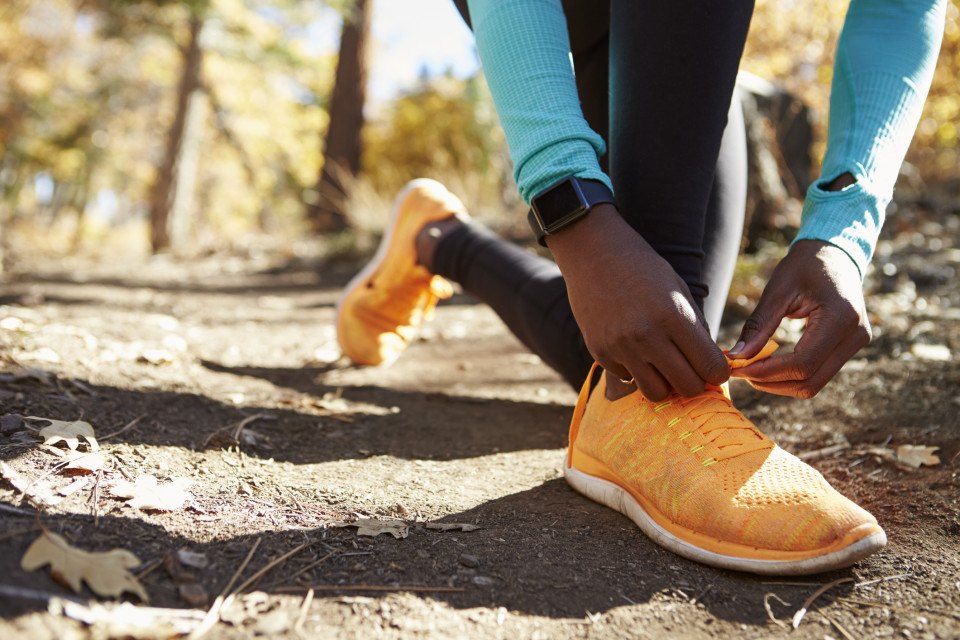5 Pro Tips for Running Your Own 10-Mile Race

/ Getty Images
After training (and sweating) all summer long, Philly runners will finally lace up for a fall race unlike any other. For the first time, the Blue Cross Broad Street Run will take place virtually this month instead of its usual spring start. Competitors will test their stuff on a 10-mile course of their making, all while following social distancing and mask guidelines. So whether you’re new to the distance or a seasoned vet, make this effort your best with advice from three past competitors who know the Blue Cross Broad Street Run in and out.
Follow this winning race strategy.
Break the 10 miles into three parts, suggests Sam Roecker, last year’s top female finisher from Philadelphia. “Distance running is about being comfortable for as long as you possibly can until it’s uncomfortable—and then pushing through it,” she explains. “The first three miles, you’re getting into your groove, and then the middle three miles is where things start to get tough. The last three miles, you’re focused on the finish, so you’re finding that end gear.” As for mile 10? “I always tell myself the last mile is free. I don’t know if it’s free or not, but buy nine, get one free.”
Strike the right pace.
The number one mistake most runners make is going out too fast, says Kai Syvertsen, an eight-time veteran of the Blue Cross Broad Street Run. “Have a pace in mind,” he advises. “Hold a pace consistently, and then just hope you can hold it those last three miles.” That advice came in handy one year when Syvertsen helped pace a fellow member of Back on My Feet, an official race charity partner that combats homelessness through running.
“He was breezing through the first half and I really had to hold him back, but those last three miles he was really struggling,” Syvertsen recalls. “Then about 50 feet from the finish line, he just stops and starts throwing up on the ground. I was like, ‘Pull it together for 50 more feet and you can throw up all you want!’ When people say, ‘Leave everything on the course,’ he literally left everything on the course.” Luckily, they still hit their goal time—and gave Syvertsen his favorite Broad Street memory.
Don’t try anything new.
“Make your race day like your practice days,” advises Lauren Kobylarz, Program Director of Students Run Philly Style, an official race charity partner that inspires youth through running and mentorship. Kobylarz develops the training plans for the 1,000 or so students who complete the Blue Cross Broad Street Run each year—including many first-time runners. “Don’t try anything brand-new on race day, don’t eat anything new, don’t wear anything new,” she says. It’s the best way to avoid blisters, cramps and other unforeseen pitfalls.
Carb-o load correctly.
To that end, fuel up for an hour-plus of running by packing in simple carbohydrates the morning before the race. All three runners recommend simple morning-of meals like a bagel, peanut-butter toast with banana or oatmeal to stay energized through the ten miles—in addition to staying hydrated, of course.
Race against yourself.
Although this year’s contenders may not have anticipated a remote race, the virtual challenge can improve mental toughness, Roeker says. “Racing against yourself is just a whole different world. It definitely forces you to dig deeper and push yourself in a way that might be a little harder since you don’t have someone directly next to you pushing you.” Adds Kobylarz, “There are so many mental and physical benefits that running can provide you. There’s no reason not to get out there and run, even if the race isn’t happening in person.”
Learn more about this year’s virtual Blue Cross Broad Street Run and get more information on how Independence Blue Cross can be a part of your plan for health and wellness.
This is a paid partnership between Independence Blue Cross and Philadelphia Magazine

